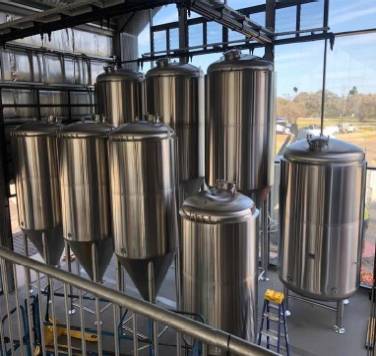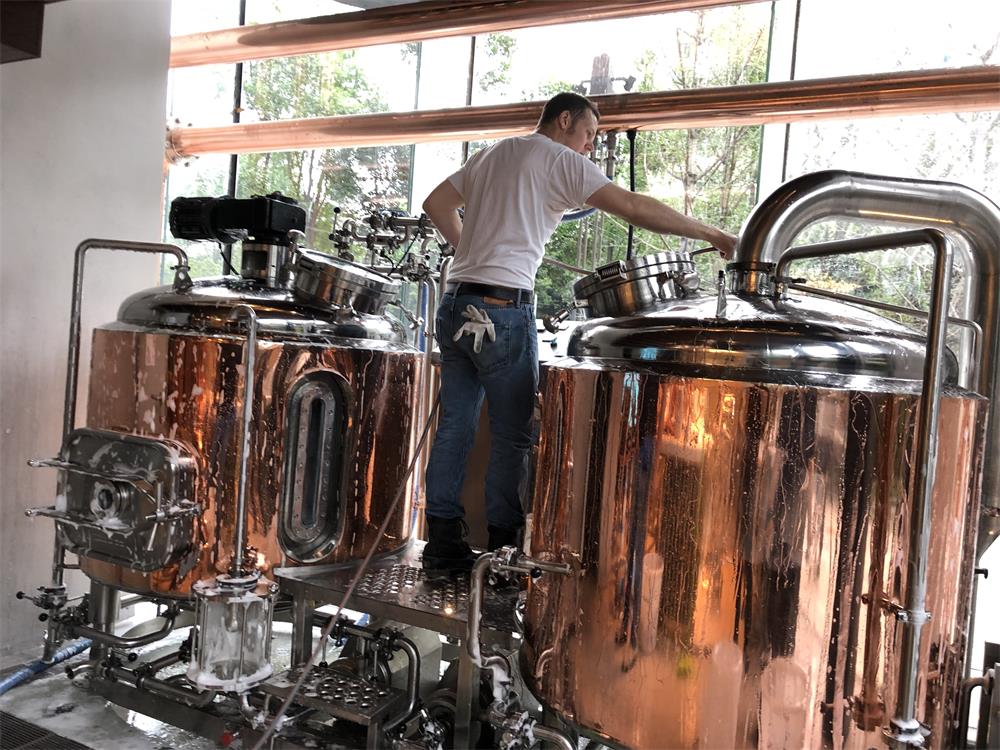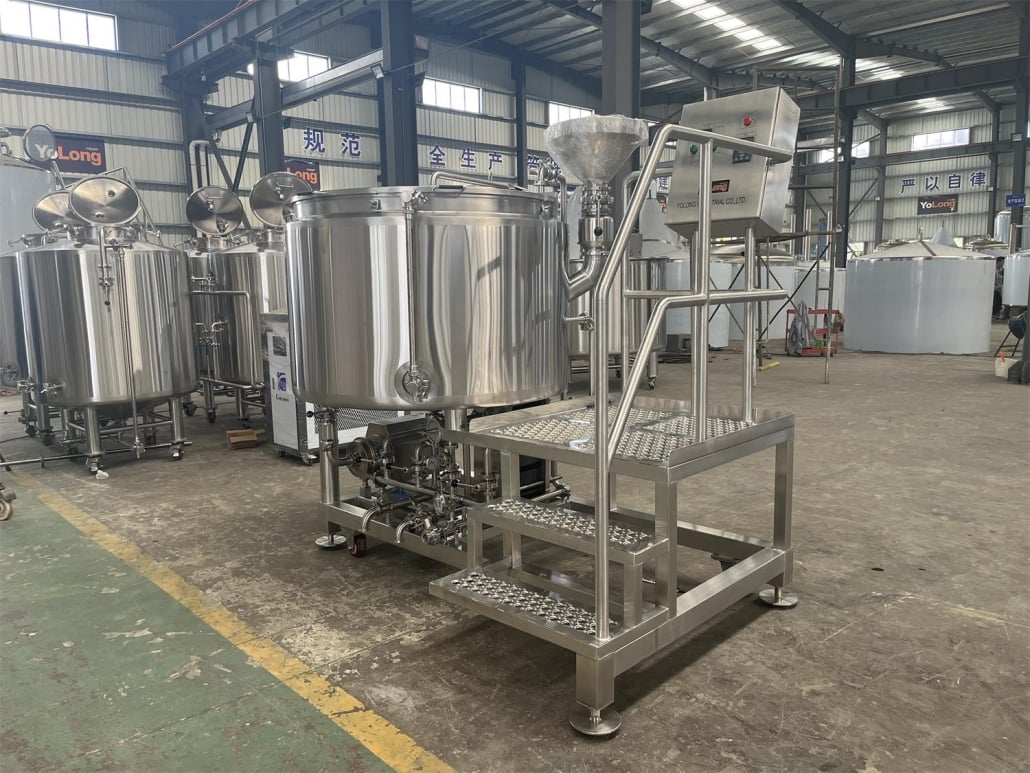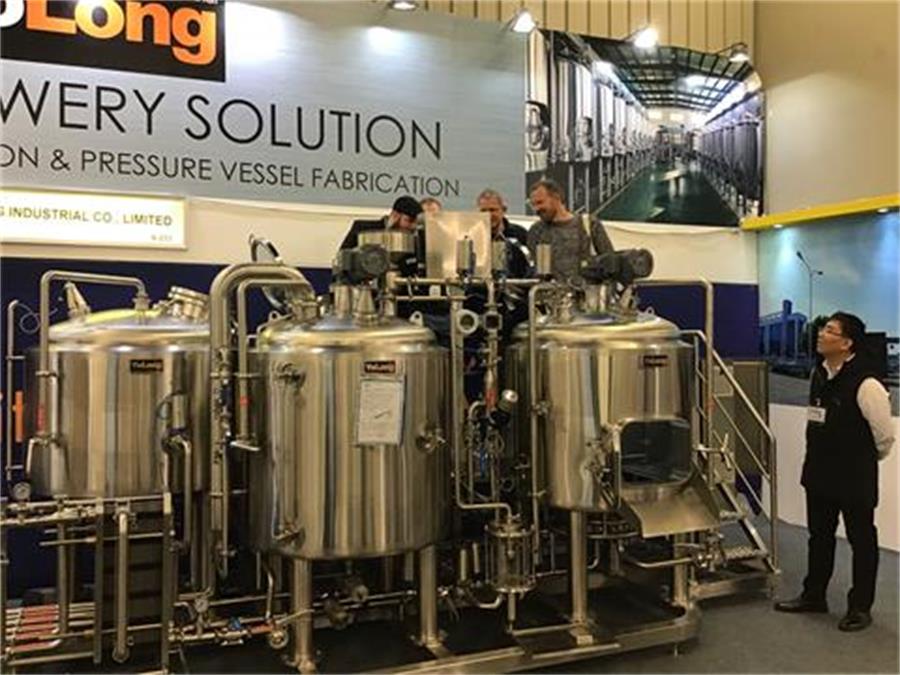Beer Equipment Company
Overview of Beer Equipment Companies
Beer brewing is an art and a science, and like any craft, it requires the right tools. Whether you’re an aspiring homebrewer or a professional looking to scale up operations, selecting the right beer equipment company can make or break your brewing experience. This guide will take you through everything you need to know about beer equipment companies, from choosing the right equipment to understanding the brewing process, and everything in between.
Understanding Beer Equipment
When you think about brewing beer, you might picture bubbling vats and the rich aroma of malt. But behind the scenes, there’s a lot more that goes into creating that perfect pint. Beer equipment companies offer a wide range of tools and systems, from simple homebrew kits to large-scale industrial systems. The key is finding equipment that matches your brewing goals and budget.
Equipment Guide: What You Need to Get Started
Selecting the right equipment is crucial for brewing success. The following sections will break down the types of equipment you need, from the basics to advanced systems for larger operations.

Types of Beer Brewing Equipment
Each piece of brewing equipment has a specific role, and together they create a seamless process from grain to glass.
1. Fermentation Tanks
Fermentation tanks are where the magic happens. This is where yeast ferments the wort, turning sugars into alcohol and carbon dioxide. They come in various sizes and shapes, with features like temperature control to ensure a consistent product.
2. Brewing Kettles
The brewing kettle is where wort is boiled and hops are added. It’s a critical part of the brewing process, and kettles are available in a range of sizes to fit different production scales.
3. Mash Tuns
Mash tuns are vessels where the mashing process occurs, converting the starches in the malt to sugars. This is the first step in creating wort, the liquid that eventually becomes beer.
4. Wort Chillers
After boiling, the wort must be quickly cooled to avoid contamination and prepare it for fermentation. Wort chillers are essential for this process, using water or glycol to reduce the temperature efficiently.
5. Grain Mills
Grain mills crush the malted barley, which is then mixed with water to create the mash. The quality of the crush can affect the efficiency of the mash and the overall taste of the beer.
6. Pumps and Tubing
Moving liquid between tanks and vessels is a constant task in brewing, and pumps and tubing are essential for this. High-quality, food-grade materials are necessary to ensure the safety and cleanliness of the product.
7. Kegging and Bottling Equipment
Once the beer is brewed, it needs to be packaged. Kegging systems are common in commercial breweries, while bottling equipment is often used for distributing smaller batches.
Beer Brewing Equipment and Their Functions
| Equipment Type | Function | Best For | Capacity |
|---|---|---|---|
| Fermentation Tanks | Fermenting wort into beer | All brewers | 5 gallons to 100+ barrels |
| Brewing Kettles | Boiling wort, adding hops | Homebrewers to large-scale brewers | 5 gallons to 200+ gallons |
| Mash Tuns | Converting starches to sugars during mashing | Craft brewers | 5 to 100+ gallons |
| Wort Chillers | Cooling wort quickly to prevent contamination | All brewers | Varies based on setup |
| Grain Mills | Crushing malted barley for mashing | All brewers | Small to large-scale mills |
| Pumps and Tubing | Transferring liquids between brewing vessels | Professional brewers | Varies based on setup |
| Kegging/Bottling Equipment | Packaging beer for distribution | Homebrewers to commercial brewers | Various sizes available |
The Brewing Process: Step-by-Step Guide
Brewing beer is a multi-step process that requires precision and patience. Understanding each step will help you appreciate the role of the equipment and the importance of selecting the right beer equipment company.
1. Malting
The first step in brewing beer is malting, where grains (usually barley) are soaked in water and allowed to germinate. After germination, the grains are dried in a kiln, halting the germination process. The result is malted barley, which will be milled and mashed.
2. Mashing
Mashing is where the magic begins. The malted barley is mixed with hot water in a mash tun, converting the starches in the grains into fermentable sugars. This sugary liquid, known as wort, is then separated from the grain husks.
3. Boiling
The wort is transferred to a brewing kettle, where it is boiled and hops are added. Boiling sterilizes the wort and extracts flavors, bitterness, and aroma from the hops.
4. Cooling
After boiling, the wort must be quickly cooled to yeast-pitching temperatures (usually between 65-75°F or 18-24°C). This is where wort chillers come into play, preventing bacterial contamination and preserving the wort’s integrity.
5. Fermentation
The cooled wort is transferred to fermentation tanks, where yeast is added. Over the next several days to weeks, the yeast will ferment the sugars, producing alcohol and carbon dioxide. The temperature and duration of fermentation are crucial, as they impact the beer’s flavor and alcohol content.
6. Conditioning and Maturation
After fermentation, the beer is conditioned to develop its flavors and carbonation. This stage can last from a few weeks to several months, depending on the style of beer being brewed.
7. Packaging
Finally, the beer is packaged for distribution. This can involve kegging, bottling, or canning, depending on the scale of the operation and the intended market.
Beer Brewing Process and Required Equipment
| Brewing Stage | Process Description | Essential Equipment |
|---|---|---|
| Malting | Grains are soaked, germinated, and dried | Malt Mill |
| Mashing | Converting starches to sugars in hot water | Mash Tun, Grain Mill |
| Boiling | Boiling wort with hops to extract flavors | Brewing Kettle, Hops Addition System |
| Cooling | Cooling wort quickly to prepare for fermentation | Wort Chiller |
| Fermentation | Yeast ferments the sugars to produce alcohol | Fermentation Tanks, Temperature Control System |
| Conditioning and Maturation | Aging beer to develop flavors and carbonation | Secondary Fermentation Vessels |
| Packaging | Kegging or bottling the finished beer | Kegging System, Bottling Line |
Choosing the Right Beer Equipment Company
Selecting the right beer equipment company can be a daunting task, especially with so many options available. The right choice depends on several factors, including your brewing goals, budget, and the scale of your operation.
Key Considerations When Choosing a Supplier
When evaluating beer equipment companies, consider the following factors:
- Reputation and Experience: A company with a strong reputation and years of experience is likely to provide reliable products and services. Look for reviews, case studies, and testimonials to gauge customer satisfaction.
- Product Range: Ensure the company offers a comprehensive range of products, from small-scale homebrew kits to large industrial systems. A diverse product range suggests they can support your growth over time.
- Customization Options: Every brewer has unique needs, and customization can be crucial. Check if the company offers customization services to tailor the equipment to your specific requirements.
- Technical Support and Training: Brewing equipment can be complex, so it’s essential to have access to technical support and training. Companies that provide this are often more reliable partners.
- Pricing and Financing: Compare pricing across different suppliers, but don’t just go for the cheapest option. Consider the quality of the equipment and the availability of financing options, which can be critical for larger investments.
- After-Sales Service: Maintenance and repair services are vital for keeping your equipment in top condition. Choose a company that offers robust after-sales support.
Factors to Consider When Choosing a Beer Equipment Supplier
| Factor | Description | Importance |
|---|---|---|
| Reputation and Experience | Company’s track record and customer reviews | High |
| Product Range | Availability of a diverse range of equipment | High |
| Customization Options | Ability to customize equipment to your needs | Medium to High |
| Technical Support and Training | Availability of support and training for complex equipment | High |
| Pricing and Financing | Cost of equipment and financing options available | High |
| After-Sales Service | Maintenance and repair services | High |

Beer Equipment Company Price Range
When budgeting for brewing equipment, it’s essential to understand the price ranges for different types of equipment. Prices can vary significantly depending on the scale of your operation and the complexity of the equipment.
Homebrewing Equipment
For homebrewers, basic kits can start as low as $100 to $300. These kits typically include small brewing kettles, fermentation tanks, and basic accessories like bottles and caps.
Craft Brewing Equipment
For craft brewers, prices range from $10,000 to $100,000, depending on the size and complexity of the system. This range includes mash tuns, brewing kettles, fermentation tanks, and basic packaging equipment.
Commercial Brewing Equipment
Commercial brewing systems are a significant investment, with prices starting from $100,000 and going up to several million dollars. These systems are designed for high-volume production and include advanced features like automated controls, temperature monitoring, and large-scale fermentation tanks.
Price Range for Beer Brewing Equipment
| Brewing Scale | Typical Equipment Cost | Example Equipment |
|---|---|---|
| Homebrewing | $100 – $300 | Basic brewing kits, small fermenters |
| Craft Brewing | $10,000 – $100,000 | Small to medium-sized brewing systems |
| Commercial Brewing | $100,000 – $5,000,000+ | Large-scale brewing systems, automated controls |
How to Operate Beer Equipment: Best Practices
Operating beer brewing equipment requires not just knowledge of the process but also a commitment to best practices. Proper operation ensures safety, consistency, and quality in your brewing process.
Safety First
Safety should always be a top priority when operating brewing equipment. This includes wearing protective gear, understanding the equipment’s operation manuals, and ensuring all machinery is in good working order before use.
Consistent Cleaning and Sanitation
Brewing is a biological process, and cleanliness is crucial. Regular cleaning and sanitation of all equipment, including kettles, fermenters, and tubing, will prevent contamination and ensure the quality of your beer.
Monitoring and Controlling Variables
Brewing is all about controlling variables—temperature, time, and ingredients all need to be carefully monitored. Use temperature controls, timers, and other monitoring tools to maintain consistency in your brewing process.
Regular Maintenance and Calibration
To keep your equipment functioning properly, perform regular maintenance and calibration. This includes checking for leaks, ensuring all moving parts are lubricated, and calibrating instruments like thermometers and pressure gauges.
Best Practices for Operating Beer Brewing Equipment
| Best Practice | Description | Impact on Brewing |
|---|---|---|
| Safety First | Prioritizing safety protocols and protective gear | Prevents accidents and injuries |
| Consistent Cleaning and Sanitation | Regular cleaning of all brewing equipment | Maintains beer quality and safety |
| Monitoring and Controlling Variables | Using tools to monitor temperature, time, and ingredients | Ensures consistency and quality |
| Regular Maintenance and Calibration | Routine checks and calibration of equipment | Prevents breakdowns and ensures accuracy |
Customizing Your Brewing Setup
One of the biggest advantages of working with a top-tier beer equipment company is the ability to customize your setup. Whether you’re a small craft brewer or a large commercial operation, customization can help you optimize your brewing process and produce a product that stands out in the market.
Customization Options to Consider
- Tank Sizes and Shapes: Different beer styles may require different fermentation or storage conditions. Custom tanks can be designed to fit your specific needs, whether that means varying sizes or specialized shapes.
- Automation and Control Systems: For larger operations, automated systems can streamline the brewing process, ensuring consistent results with less manual labor. Custom automation setups can include everything from temperature controls to automated cleaning systems.
- Material Choices: Stainless steel is the industry standard for most brewing equipment, but there are variations in quality and thickness. Depending on your budget and brewing style, you may want to opt for higher-grade materials.
- Aesthetic and Branding Elements: For breweries that offer tours or have an on-site taproom, the look of the equipment can be just as important as its function. Custom finishes and branding elements can enhance the aesthetic appeal of your brewery.
- Space and Layout Considerations: If space is a concern, a custom equipment layout can maximize efficiency. This might include vertical tanks for small spaces or modular systems that can be expanded as your operation grows.
Customization Options for Brewing Equipment
| Customization Option | Description | Benefits |
|---|---|---|
| Tank Sizes and Shapes | Custom tanks tailored to specific beer styles or space requirements | Optimal fermentation conditions |
| Automation and Control Systems | Automated systems for consistent and efficient brewing | Reduces manual labor, ensures consistency |
| Material Choices | Selection of stainless steel grades and thickness | Durability, longevity, and quality |
| Aesthetic and Branding Elements | Custom finishes and branding for a unique look | Enhances brewery’s visual appeal |
| Space and Layout Considerations | Customized layouts to fit space and expansion needs | Maximizes efficiency and productivity |
Installation, Operation, and Maintenance
Once you’ve selected your equipment and customized it to your needs, the next step is installation. Proper installation is crucial for the long-term operation and maintenance of your brewery.
Installation Considerations
Installation should be handled by professionals with experience in brewing systems. This ensures that all equipment is correctly connected, calibrated, and ready for use. Key considerations during installation include:
- Space Requirements: Ensure that your brewing space is adequate for the equipment size and layout.
- Plumbing and Electrical Needs: Brewing systems often require specific plumbing and electrical setups. Make sure these are in place before installation.
- Safety Protocols: Installation teams should follow strict safety protocols to avoid accidents and ensure the system is safe to operate.
Operation Tips
Once installed, operating your brewing system effectively will ensure consistent quality and efficiency. Key tips include:
- Training Staff: Make sure all staff are trained on the new equipment and understand how to operate it safely and efficiently.
- Monitoring Systems: Use digital monitoring systems to keep track of temperature, pressure, and other critical variables in real-time.
- Regular Reviews: Periodically review your brewing process to identify areas for improvement.
Maintenance Best Practices
Regular maintenance is essential to keep your brewing system running smoothly. This includes:
- Routine Cleaning: Regularly clean all equipment, especially those that come into contact with beer.
- Scheduled Inspections: Conduct regular inspections to check for wear and tear and address any issues before they become major problems.
- Professional Servicing: Schedule professional servicing at least once a year to ensure that all equipment is in top condition.
Installation, Operation, and Maintenance Considerations
| Aspect | Description | Importance |
|---|---|---|
| Installation Considerations | Professional installation, space, plumbing, and safety requirements | Ensures proper setup and safety |
| Operation Tips | Training, monitoring, and regular reviews | Consistency and efficiency in brewing |
| Maintenance Best Practices | Routine cleaning, inspections, and professional servicing | Prevents breakdowns, extends equipment life |
Supplier Comparison: Advantages and Limitations
When choosing a beer equipment supplier, it’s important to weigh the advantages and limitations of each option. The following table compares key factors across different suppliers to help you make an informed decision.
Supplier Comparison: Advantages and Limitations
| Supplier Name | Advantages | Limitations |
|---|---|---|
| Supplier A | Extensive experience, wide product range, robust after-sales support | Higher prices |
| Supplier B | Competitive pricing, strong customization options | Limited after-sales support |
| Supplier C | Advanced technology, strong technical support | Smaller product range |
| Supplier D | Focus on small to mid-sized breweries, personalized service | Limited scalability for large operations |
How to Choose the Right Supplier
Choosing the right supplier is more than just comparing prices. You need to consider a range of factors, from the quality of the equipment to the level of customer service provided.
Evaluating Supplier Reputation
A supplier’s reputation is a good indicator of the quality of their products and services. Look for suppliers with strong customer reviews and testimonials. Don’t hesitate to ask for references or visit a brewery that uses their equipment.
Assessing Product Quality
The quality of the equipment is paramount. High-quality materials and construction mean your equipment will last longer and require less maintenance. Ask about the materials used, and request detailed product specifications.
Customer Service and Support
Good customer service is essential, especially when dealing with complex brewing systems. Evaluate the supplier’s support options, including availability of training, technical support, and maintenance services.
Pricing and Financing Options
Price is always a consideration, but it shouldn’t be the only factor. Look for suppliers that offer transparent pricing and flexible financing options. Consider the long-term cost of ownership, including maintenance and repair costs.
Customizability and Flexibility
The ability to customize your equipment can be a significant advantage, especially if you have specific brewing needs. Choose a supplier that offers a range of customization options and is willing to work with you to create the perfect system.
Key Factors in Choosing a Beer Equipment Supplier
| Factor | Description | How to Evaluate |
|---|---|---|
| Reputation | Supplier’s track record and customer satisfaction | Reviews, testimonials, references |
| Product Quality | Materials and construction quality | Product specifications, warranties |
| Customer Service and Support | Availability of training, technical support, and maintenance | Support options, customer reviews |
| Pricing and Financing Options | Cost of equipment and financing availability | Transparent pricing, financing terms |
| Customizability and Flexibility | Ability to tailor equipment to specific needs | Range of customization options |
Pros and Cons of Different Beer Equipment Suppliers
Choosing the right beer equipment supplier is a critical decision for any brewery. Each supplier has its own set of strengths and weaknesses, and understanding these can help you make an informed choice.
Advantages of Large-Scale Suppliers
Large-scale suppliers typically offer a wider range of products and more advanced technology. They also have the resources to provide robust after-sales support, including training and maintenance services. However, they may come with higher prices and less personalized service.
Advantages of Small-Scale Suppliers
Small-scale suppliers often offer more personalized service and may be more flexible in terms of customization. They can be a great choice for craft brewers or smaller operations. However, they may have a more limited product range and less sophisticated technology.
Limitations of Large-Scale Suppliers
While large-scale suppliers offer many benefits, they may also have some limitations. Higher prices and less flexibility in terms of customization can be drawbacks. Additionally, they may prioritize larger clients, leaving smaller operations with less attention.
Limitations of Small-Scale Suppliers
Small-scale suppliers may struggle to support large operations or provide the same level of technology and automation as larger companies. They may also have less comprehensive after-sales support.
Pros and Cons of Different Beer Equipment Suppliers
| Supplier Type | Advantages | Limitations |
|---|---|---|
| Large-Scale Suppliers | Wide product range, advanced technology, strong support | Higher prices, less personalized service |
| Small-Scale Suppliers | Personalized service, flexibility, lower prices | Limited product range, less advanced technology |

FAQ
What should I consider when choosing a beer equipment company?
When choosing a beer equipment company, consider factors such as the company’s reputation, the range and quality of products they offer, customization options, pricing, and after-sales support. It’s also important to evaluate their experience and customer reviews to ensure you’re making a well-informed decision.
How much does beer brewing equipment cost?
The cost of beer brewing equipment varies widely depending on the scale of your operation. Homebrewing kits can cost as little as $100, while commercial systems can range from $100,000 to several million dollars. Craft brewing systems typically fall between $10,000 and $100,000.
Can I customize my brewing equipment?
Yes, many beer equipment companies offer customization options. You can customize tank sizes and shapes, automation systems, material choices, and even the aesthetic elements of your equipment to suit your specific brewing needs.
What is the best way to maintain brewing equipment?
Regular maintenance is key to keeping your brewing equipment in good working condition. This includes routine cleaning, scheduled inspections, and professional servicing. Proper maintenance can prevent breakdowns and extend the lifespan of your equipment.
How important is after-sales support?
After-sales support is crucial, especially for complex brewing systems. Good after-sales support can include technical assistance, maintenance services, and training for your staff, all of which are important for the smooth operation of your brewery.
Conclusion
Choosing the right beer equipment company is a vital step in setting up a successful brewery. By understanding the equipment you need, the brewing process, and how to choose and work with suppliers, you can ensure that your brewing operation runs smoothly and produces high-quality beer. Remember to prioritize quality, safety, and support in your decisions, and you’ll be well on your way to brewing success.
Share this entry
Interested in learning more about Brewing Systems including additional details and pricing information? Please use the form below to contact us!
YOLONG BREWERY EQUIPMENT FAQS
- Commercial Brewery / Craft Brewery / Microbrewery / Nanobrewery
- What is The Difference Between Craft Beer and Industrial Beer?
- The Bespoke Differences In Custom Brewing Systems
- Everything You Need to Know About Kettle Souring
- How to Choose Brewing Equipment for Your business?
- How To Choose The-Best Partner To Build Your Commercial Microbrewing System?
- Two Detection Sensors That You Need To Use In Your Brewhouse System
- Remote Control Applications in Brewing Equipment/How does it work?
- How To Clean Your Brand New Brewery Tanks?

